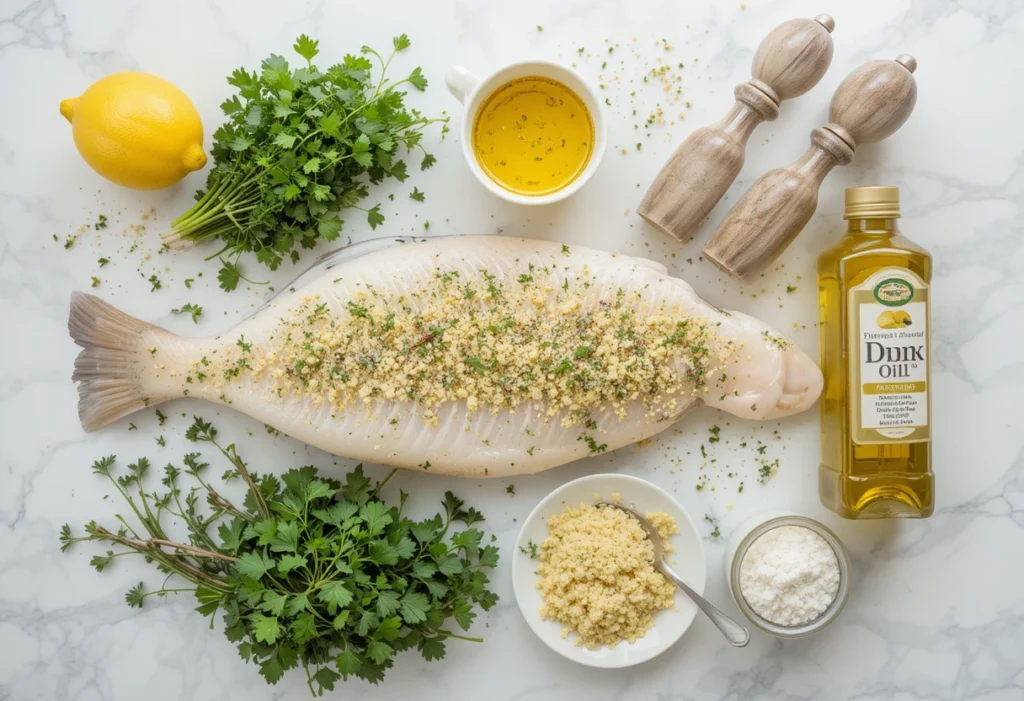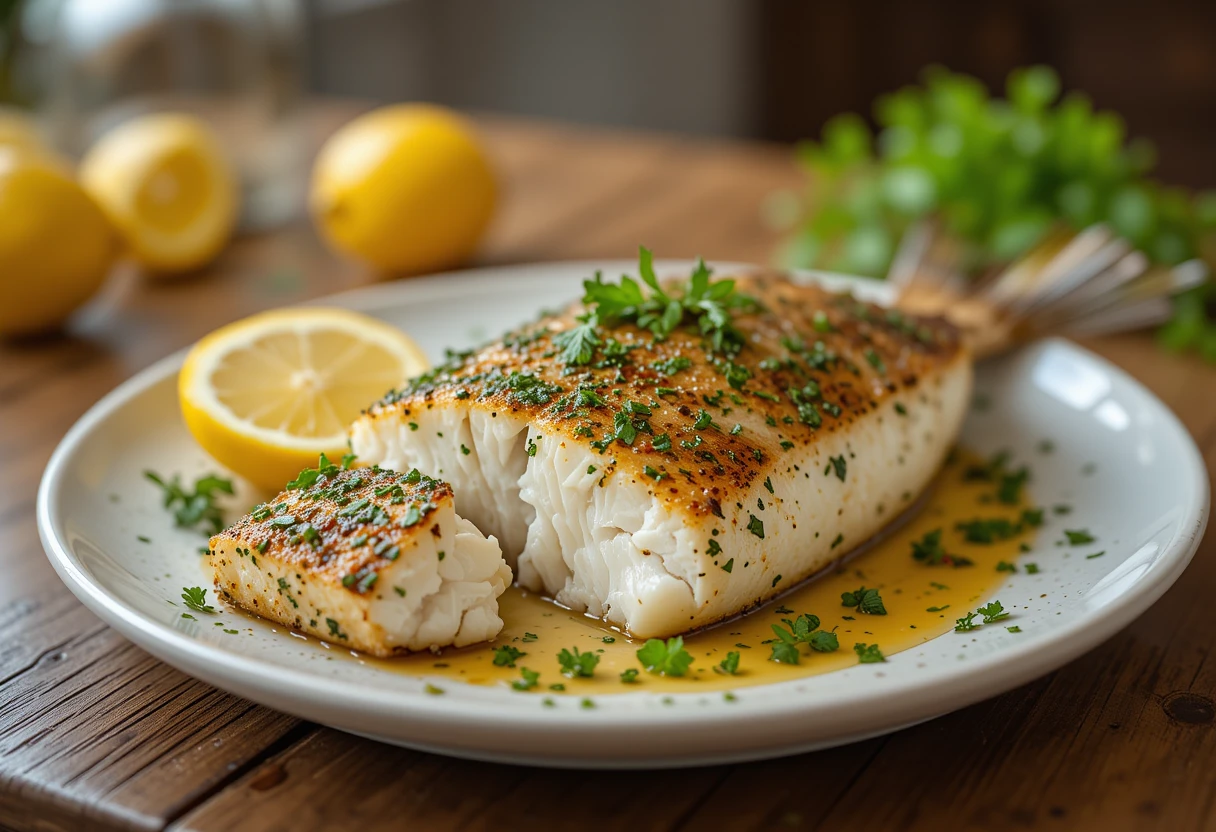Picture yourself standing in your kitchen, holding a beautiful fillet of fresh lingcod. Your mouth waters at the possibilities, but perhaps there’s a hint of uncertainty about how to do justice to this prized catch. Whether you’ve just returned from a successful fishing trip or picked up this versatile fish from your local market, you’re about to discover why lingcod deserves a special place in your culinary repertoire.
I’ll never forget my first encounter with lingcod – a misty morning off the Pacific Coast, where the challenge of catching this remarkable fish was matched only by my determination to prepare it perfectly. Today, I’m sharing tips and techniques of cooking lingcod to transforming this magnificent fish into memorable meals that will have your family and friends asking for seconds.
Table of Contents
Understanding Lingcod
What is Lingcod?
Despite its name, lingcod isn’t actually a cod at all. This fascinating fish belongs to the greenling family and is native to the North Pacific waters. Known for its impressive size and distinctive appearance, lingcod can grow up to 5 feet in length and feature a mottled blue-green coloration that camouflages them perfectly in their rocky reef habitat.
What makes lingcod particularly special for your kitchen adventures is its remarkably versatile nature. The meat is firm yet tender, with large, white flakes that remain moist when cooked properly. You’ll find that lingcod offers a mild, slightly sweet flavor that’s less “fishy” than many other seafood options, making it an excellent choice for those who might be hesitant about preparing fish at home.
Nutritionally, you’re in for a treat. Lingcod packs an impressive punch of lean protein, offering approximately 23 grams per 3.5-ounce serving. You’ll also benefit from essential omega-3 fatty acids, vitamin B12, and selenium – all while keeping the calorie count surprisingly low at just around 120 calories per serving.
Selecting the Perfect Lingcod
Your journey to a spectacular lingcod dish begins at the market. When selecting your fish, keep these crucial points in mind:
Fresh lingcod should display:
- Clear, bright eyes (if buying whole fish)
- Firm, springy flesh that bounces back when pressed
- A clean, oceanic scent without any strong fishy odor
- Moist, shiny skin without any discoloration
- Bright red gills free from slime or darkness
For sustainability purposes, consider purchasing your lingcod between October and February, when the fish are most abundant. If you’re buying frozen, ensure the fish is solidly frozen with no visible ice crystals or freezer burn.
Essential Preparation Steps
Cleaning and Filleting
Prior to beginning the cooking procedure, ensure you have adequately prepared everything. Here’s your comprehensive guide to getting your lingcod ready for the pan:
Required Tools:
- Sharp fillet knife
- Cutting board with drainage
- Kitchen shears
- Clean kitchen towels
- Bowl for trimmings
- Scaling tool (if preparing whole fish)
Step-by-step filleting process:
- Clean the fish by rinsing it under cold water, then gently dry it
- Remove scales if present, working from tail to head
- Make your initial cut behind the gills, down to the backbone
- Follow the backbone with your knife, keeping it angled slightly downward
- Continue cutting until you reach the tail
- Flip and repeat on the other side
- Remove any remaining pin bones with pliers
- Trim away the dark meat along the lateral line
Basic Preparation Methods
Table: Lingcod Preparation Methods
| Method | Time | Temperature | Best For |
|---|---|---|---|
| Baking | 20-25 min | 400°F | Whole fillets |
| Grilling | 4-5 min/side | High heat | Smaller portions |
| Pan-searing | 3-4 min/side | Medium-high | Quick meals |
| Poaching | 8-10 min | Simmer | Delicate texture |
Signature Lingcod Recipes
Classic Herb-Crusted Lingcod
Table: Ingredients
| Ingredient | Amount |
|---|---|
| Lingcod fillet | 2 lbs |
| Fresh herbs (parsley, thyme, dill) | 1/4 cup |
| Panko breadcrumbs | 1 cup |
| Lemon | 1 whole |
| Extra virgin olive oil | 2 tbsp |
| Dijon mustard | 1 tbsp |
| Garlic cloves, minced | 2 |
| Sea salt | 1 tsp |
| Fresh ground pepper | 1/2 tsp |

Instructions:
- Preheat your oven to 400°F
- Gently dry the fillet with a paper towel and sprinkle with salt and pepper for seasoning
- Mix herbs, breadcrumbs, and minced garlic
- Brush the fillet with Dijon mustard
- Press the herb mixture onto the fish
- Drizzle with olive oil
- Bake for 20-25 minutes until the crust is golden and fish flakes easily
Pan-Seared Lingcod with Lemon Butter Sauce
Table: Ingredients
| Ingredient | Amount |
|---|---|
| Lingcod fillet | 1.5 lbs |
| Butter | 4 tbsp |
| Lemon | 1 whole |
| White wine | 1/4 cup |
| Capers | 2 tbsp |
| Fresh parsley | 2 tbsp |
| Salt and pepper | To taste |

Pro Tips for Perfect Results
Temperature Control: The Key to Success
Your success with lingcod largely depends on mastering temperature control. Unlike some heartier fish, lingcod requires precise handling to achieve that perfect, flaky texture you’re aiming for.
When cooking lingcod, keep these temperature guidelines in mind:
- For baking: Preheat your oven thoroughly to 400°F
- The internal temperature should reach 145°F
- Let the fish rest for 5-7 minutes after cooking
- Remove the fish from heat when it reaches 140°F, as it will continue cooking
Using a meat thermometer isn’t just recommended – it’s essential. Insert it into the thickest part of the fillet, avoiding touching the pan or baking sheet. You’ll want to check the temperature in several spots, especially if your fillet varies in thickness.
Seasoning Guidelines
The beauty of lingcod lies in its subtle flavor profile, which provides you with a fantastic canvas for creativity. However, there’s an art to seasoning this delicate fish:
Basic Seasoning Combination:
- Sea salt and freshly ground black pepper
- Fresh herbs (thyme, parsley, dill)
- Lemon zest
- Minced garlic
- A touch of paprika for color
Marination Tips:
- Limit marination time to 30 minutes maximum
- Use oil-based marinades to keep the fish moist
- Avoid acidic marinades that might “cook” the fish
- Pat the fish dry before cooking, even after marinating
Timing Considerations:
- Season with salt just before cooking to prevent moisture loss
- Add delicate herbs in the last few minutes of cooking
- Reserve a portion of your seasoning mix for garnishing after cooking
Troubleshooting Common Issues
Even experienced cooks occasionally encounter challenges when preparing lingcod. Here’s how to address the most common issues:
Preventing Dryness
If your lingcod turns out dry, you might be:
- Cooking at too high a temperature
- Leaving it in the heat too long
- Not using enough oil or butter
- Forgetting to baste during cooking
Solution: Create a protective barrier by:
- Brushing with oil before cooking
- Using a butter baste while cooking
- Considering the paper-bag method for baking
- Monitoring internal temperature closely
Dealing with Tough Texture
A tough lingcod usually indicates:
- Overcooking
- Poor quality fish
- Improper storage before cooking
- Incorrect cutting technique
To avoid this:
- Cut against the grain when portioning
- Store properly in the coldest part of your refrigerator
- Use gentle cooking methods like poaching for older fish
- Take off the heat immediately once it starts to flake effortlessly
Serving Suggestions
Wine Pairings
Your lingcod deserves the perfect wine companion. Consider these pairings:
- Unoaked Chardonnay: Complements the fish’s natural sweetness
- Pinot Grigio: Offers crisp acidity that enhances without overwhelming
- Sauvignon Blanc: Perfect with herb-crusted preparations
- Dry Riesling: Excellent with spicier preparations
Side Dish Recommendations
Create a memorable meal with these complementary sides:
- Roasted fingerling potatoes with herbs
- Grilled asparagus with lemon zest
- Wild rice pilaf with mushrooms
- Mediterranean-style quinoa salad
- Sautéed seasonal vegetables
Plating Techniques
Elevate your presentation with these professional plating tips:
- Use warm plates to maintain proper serving temperature
- Create height by stacking components
- Add color through garnishes and vegetables
- Incorporate sauce artistically using dots or swooshes
- Remember the rule of odds for garnish placement

Conclusion
After mastering these techniques and tips for cooking lingcod, you’re well-equipped to create restaurant-quality dishes in your own kitchen. Remember that practice makes perfect – each time you prepare this versatile fish, you’ll discover new nuances and develop your own preferred methods. Don’t be afraid to experiment with different seasonings and cooking techniques while keeping the fundamental principles in mind.
The key to success lies in respecting the delicate nature of lingcod while being bold enough to make it your own. Whether you’re serving it for a casual family dinner or an elegant dinner party, lingcod offers endless possibilities for creating memorable meals.
Frequently Asked Questions
Q: How long should I cook lingcod to ensure it’s done?
The cooking time varies depending on the thickness of your fillet and cooking method. Generally, follow these guidelines:
- Baking (400°F): 20-25 minutes for a 1-inch thick fillet
- Grilling: 4-5 minutes per side on high heat
- Pan-searing: 3-4 minutes per side on medium-high heat Always cook until the internal temperature reaches 145°F.
Q: What’s the best way to cook lingcod without drying it out?
Keep these points in mind for moist, tender lingcod:
- Use moderate heat
- Incorporate moisture through butter basting or marinades
- Don’t overcook – remove from heat when just done
- Let it rest after cooking
- Consider using the paper bag method for baking
Q: Can I freeze lingcod after cooking?
Yes, you can freeze cooked lingcod, but follow these steps for best results:
- Cool completely before freezing
- Wrap tightly in plastic wrap, then foil
- Store in an airtight container
- Use within 2-3 months
- Thaw overnight in the refrigerator
Q: What are the best seasonings for cooking lingcod?
While personal preference plays a role, these seasonings work particularly well:
- Lemon and herbs (thyme, dill, parsley)
- Garlic and butter
- Old Bay seasoning
- Cajun spice mix (use sparingly)
- Simple salt and pepper
Q: How do I know if my lingcod is fresh?
Look for these indicators of freshness:
- Clear, bright eyes
- Firm flesh that springs back when pressed
- Fresh, oceanic smell
- Bright red gills
- Skin that appears moist and shiny
Q: What’s the ideal internal temperature for cooked lingcod?
According to FDA guidelines, fish should be cooked until it reaches an internal temperature of 145°F. However, for optimal results:
- Remove from heat at 140°F
- Let rest for 5-7 minutes
- The temperature will continue rising to reach 145°F
- Use a reliable meat thermometer for accuracy
Remember, cooking lingcod is an enjoyable journey of discovery. Each time you prepare this remarkable fish, you’ll develop a better understanding of its unique characteristics and how to bring out its best qualities. Don’t hesitate to revisit these guidelines as you perfect your technique, and most importantly, enjoy the process of creating delicious, healthy meals with this versatile fish.
Have you tried cooking lingcod using any of these methods? Share your experiences in the comments below, and don’t forget to subscribe to our newsletter for more seafood cooking tips and recipes delivered straight to your inbox!
